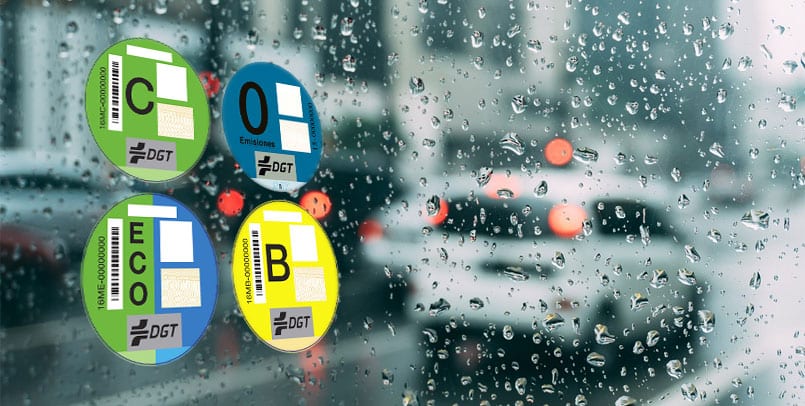
DGT environmental protection marks - what is it, cost, application and types
Content
- What are environmental attributes?
- Types of Distinctive Environmental DGT
- Why is it important - Ecological features in the protection of the environment by vehicles?
- How to find out that environmental attributes belong to a car?
- Where to order the environment logo?
- What is the cost of environmental labeling?
Environmental decals are a measure that has its origins in the AIR (National Air Quality and Atmosphere) Plan and the Resolution of 13 April 2016 of the General Directorate of Traffic (DGT) on the establishment of environmental decals.
Vehicles that bear this decal are entitled to some special benefits. For example, cars with the zero-emissions label can drive in the bus-VAO lane and also receive benefits in the form of reduced tax payments.

However, according to Pablo Fernandez, one of the founders of Clicars, more than half of the population who have one or more vehicles do not know the differences between the various environmental protection signs issued by the Traffic Authority.
What are environmental attributes?
The DGT environmental label is a label that is placed on cars, vans, trucks, motorcycles and mopeds based on their environmental impact. Their purpose is to rank fleets in terms of energy efficiency, in terms of emissions of polluting gases, of the vehicles that carry them.
Types of Distinctive Environmental DGT
These Environmental attributes are classified into four types:
- Environmental features B. Tag B is yellow and defines the following vehicles:
- Passenger cars and vans registered since January 2001 and diesel cars registered since 2006.
- Vehicles more than 8 seats, and heavy, both gasoline and diesel, as well as registered after 2005.
- Ecological signs of IVF. On the ECO label - green and blue, they identify the following vehicles:
- Electric vehicles with autonomy less than 40 km.
- Hybrids (VZU).
- Vehicles powered by natural gas (CNG), (LNG) and liquefied petroleum gas (LPG) engines.
- Environmental attributes C. Tag C is green, and defines the following vehicles:
- Cars and gasoline vans registered since January 2006 and diesel registered since 2014.
- Vehicles of more than 8 seats, and trucks, both gasoline and diesel, registered since 2014.
- Environmental signs 0 emissions. On the label, zero emission is blue and identifies, as its name suggests, zero emission vehicles, which include the following:
- Electric batteries (BEV).
- Extended Life Electric (REEV).
- Electric Hybrids (PHEV) with autonomy of at least 40 kilometers.
- Fuel cell vehicles.
Why is it important - Ecological features in the protection of the environment by vehicles?
Thanks to environmental features, you can visually determine which cars are more environmentally friendly, and therefore deserve special attention in various areas, such as those related to taxation, etc.
To facilitate this visual identification, the Motion Control recommends placing an environmental logo, in the lower right of the windshield.
How to find out that environmental attributes belong to a car?
There are several ways to find out if the environmental features correspond to the vehicle: By entering the DGT Environmental Features query into the Google search engine.
Entering the “Environmental features” item on the portal is a statistical EVALUATION, which contains all models with environmental markings.
By calling 060.
By asking a question to any Police Officer or Car Dealer.
Where to order the environment logo?
Request and purchase of a sign of environmental attributes can be performed in the following places:
- In post offices.
- In a network of certified workshops
- At the Institutes of the Automotive Industry (IDEAUTO).
- At the Ganvam Association.
What is the cost of environmental labeling?
Basically, environmental tag icons cost around 5 euros. However, this price may increase depending on the supplier, as some will charge additional fees for shipping, taxes, etc.
Initiatives aimed at protecting the environment are increasingly emerging in the automotive industry. Nevertheless, the responsibility in this industry lies not only with the driver, but also with the manufacturer, as well as professional workshops, who must take the necessary measures to reduce their environmental impact by introducing good practices in both waste management and maintenance used cars.
One comment
Nikita
Cool stuff. You need to buy yourself. Never honestly heard 😉